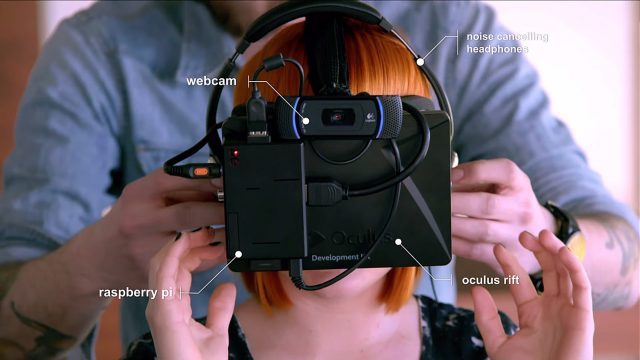Ever wonder what it’s like to live with three seconds of lag in real life? An ‘experiment’ from Swedish ISP UME uses the Oculus Rift to show just what that would be like. It turns out that real-life lag is hilariously similar to the lag gamers are used to.
 A testament to the ‘trending’ nature of the Rift, Swedish ISP UME combined the Oculus Rift, Raspberry Pi, a webcam, and noise canceling headphones to create an encompassing visual-audio experience that delays input from the outside world by three seconds. The Raspberry Pi is even used to occasionally freeze the already-lagged view for a ‘buffering’ period, making things even harder on the poor folks wearing the rig. While this is likely a great recipe for nausea, it’s also a great recipe for comedy.
A testament to the ‘trending’ nature of the Rift, Swedish ISP UME combined the Oculus Rift, Raspberry Pi, a webcam, and noise canceling headphones to create an encompassing visual-audio experience that delays input from the outside world by three seconds. The Raspberry Pi is even used to occasionally freeze the already-lagged view for a ‘buffering’ period, making things even harder on the poor folks wearing the rig. While this is likely a great recipe for nausea, it’s also a great recipe for comedy.
The title of the video, Living with Lag – An Oculus Rift Experiment, makes it clear in my mind that the content creators were purposely pushing the Rift aspect of the spot to be part of the buzz surrounding the product. Despite conflating throughput with latency, it appears to be a major viral success for the ISP. Since its release on Sunday, it’s already passed 3.2 million views on YouTube.






